Different Types of Vials: Benefits and Applications
A vial is a small container, typically made of glass or plastic. Unlike blood collection tubes, vials often resemble tubes or bottles and feature a flat base. They come in various designs and cap options to accommodate different storage and handling requirements.
Vials are widely used in storing medications and laboratory samples. While primarily associated with the medical field, vials play a crucial role in diverse industries, from law enforcement to retail. With so many types available, selecting the right vial can seem daunting. However, all vials aim to safely contain substances without allowing adsorption or leaching. Investing in quality vials ensures sample protection and operational efficiency in your facility. Understanding the different materials, benefits, and applications simplifies the decision-making process.

The Different Vial Materials
Most vials are crafted from glass or plastic, and the choice of material depends on compatibility with your samples and storage conditions. An ideal vial should provide an airtight seal while allowing easy access to the contents. Here are the advantages of glass and plastic vials and their potential applications:
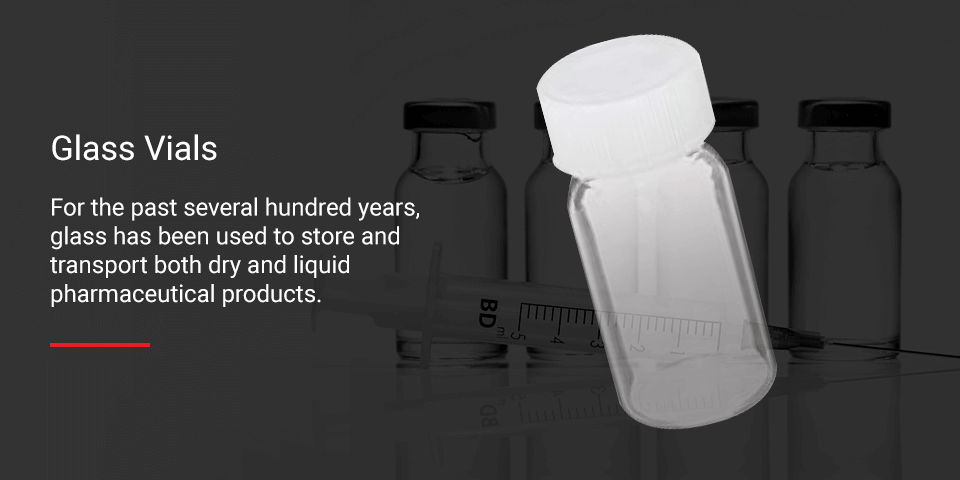
Glass Vials
Historically, glass vials date back to ancient times when Egyptians used them to store perfumes and oils. The Phoenicians employed glass vials during funeral ceremonies to hold their tears. Over the centuries, glass has remained a staple in preserving both liquid and solid pharmaceuticals.
Today, glass vials continue to serve as the go-to material for storing delicate medicines and injectable products. They effectively shield contents from environmental factors like light and moisture, ensuring extended shelf life. Glass vials house some of the world’s most precious substances, ranging from scorpion venom to insulin.
 hbspt.cta._relativeUrls=true;hbspt.cta.load(22042380, 'dec3b949-f838-493a-b8a5-e1502a03a7a7', {"useNewLoader":"true","region":"na1"});
hbspt.cta._relativeUrls=true;hbspt.cta.load(22042380, 'dec3b949-f838-493a-b8a5-e1502a03a7a7', {"useNewLoader":"true","region":"na1"});
Several types of glass vials exist, and choosing the right one is essential. Vials can be made of soda-lime glass, the most common and cost-effective option, or borosilicate glass. The United States Pharmacopeia (USP) categorizes glass containers into three classes. According to the USP, borosilicate glass falls under Class 1, indicating suitability for most injectable and non-injectable products. Generally, borosilicate glass is regarded as a premium vial material.
Borosilicate glass contains at least 5% boric oxide, enhancing its hydrolytic and thermic resistance. Its low coefficient of thermal expansion makes it highly desirable in the chemical and pharmaceutical industries. Conversely, soda-lime-silica glass is classified as Class II or Class III. Class II features an inner surface treatment to improve hydrolytic resistance, suitable for acidic and neutral parenteral products. Class III soda-lime-silica glass is typically appropriate for non-parenteral applications.
Here are the benefits of using glass vials:
- Clarity: Glass vials offer a smooth, transparent surface, enabling easy inspection for contamination or degradation. This makes glass the preferred container material for injectable liquids.
- Inertness: Borosilicate glass does not react with most substances, except for a few acids. Thus, you can rest assured that borosilicate glass won’t alter your samples, ensuring a long shelf life.
- Heat resistance: Borosilicate glass has a low coefficient of thermal expansion and is more resistant to thermal shock than other materials. This property makes it ideal for chromatography.
- Nonporous surface: Glass is nonporous and won’t affect the smell or taste of stored products. It minimizes the risk of evaporation or contamination from substances trapped in container pores.
- Recyclable and sustainable: Glass is environmentally friendly, recyclable, and composed of abundant raw materials like sand. Choosing glass vials supports sustainability efforts.
Sometimes, iron is added to glass to create an amber tint, protecting stored substances from UV light damage. Light-sensitive samples should be kept in amber vials.
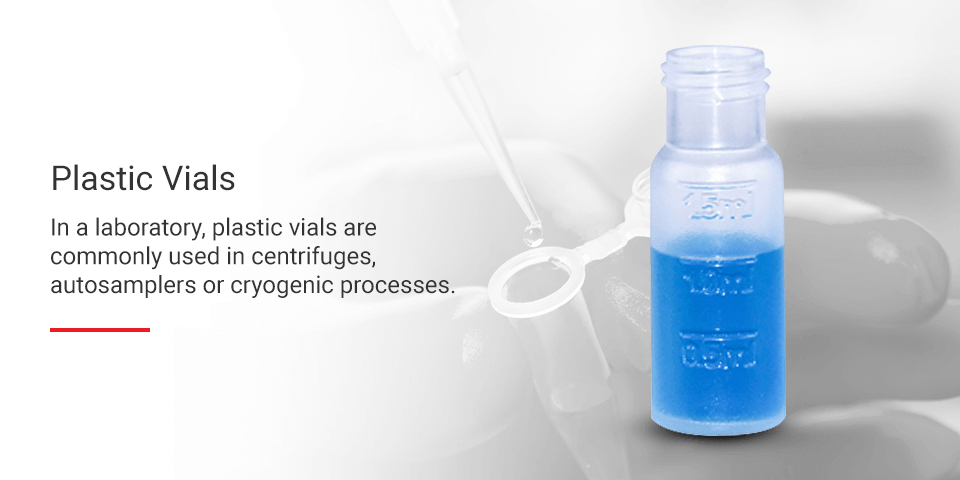
Plastic Vials
Plastic vials serve numerous purposes, from holding perfume samples in department stores to storing evidence at crime scenes for law enforcement agencies. In laboratories, plastic vials are frequently used in centrifuges, autosamplers, and cryogenic processes. Some substances, like hydrofluoric acid, must be stored in plastic rather than glass.
Plastic vials are typically made of polypropylene or polyethylene. Polypropylene is a rigid material that can be translucent or colored. It resembles polyethylene in many aspects but exhibits slightly better heat resistance. High-density polyethylene (HDPE) is one of the most common plastics used in bottles and containers, valued for its flexibility and excellent impact resistance. Both materials find extensive use in medical and pharmaceutical applications. Here are the advantages of plastic vials:
- Chemical resistance: Except for strong oxidizing agents, polypropylene and polyethylene exhibit excellent resistance to bases, alcohols, and acids, with minimal risk of leaching. These plastics can endure frequent cleaning and sterilization in clinical settings.
- High melting point: Polypropylene boasts a high melting point compared to other thermoplastics, softening around 155°C. It is commonly used in autoclaves due to its heat tolerance. It also retains strength in extremely cold temperatures.
- Durability: Plastic is robust and shatterproof, making it safer in labs where accidents are possible. Broken vials can compromise samples and increase replacement costs. Plastic vials eliminate these concerns.
- Lightweight: Plastic is lightweight and easy to handle, improving efficiency in busy work environments. Its reduced weight makes transportation and shipping more convenient and potentially cost-effective.
- Affordability: Plastic is an economical material since production costs are lower than those of other materials. Selecting plastic vials offers quality at a reasonable price.
Plastic vials are available in glass-like clarity or amber hues for light-sensitive substances.
Silicone Vials
Some glass vials undergo a process called siliconization, which involves applying a silicone solution to create a protective layer. The benefits of silicone vials include:
- Minimal interaction between the sample and the vial
- Prevents high-viscosity fluids from adhering to the vial's interior
- Enhances transparency
Siliconization can be applied to amber, borosilicate, or soda-lime glass vials and bottles.
Common Vial Types
While most vials are made of glass or plastic, they come in various sizes and designs tailored for specific applications. Always evaluate intended usage before selecting vials to ensure proper sample protection. Below are some common vial types, their applications, and benefits:
Autosampler Vials
Autosamplers automate sample loading for analysis. Choosing the right vial is vital, as the wrong type could cause sample degradation or damage to the autosampler. Not all autosampler vials are identical, so consider the machine type before selecting the vial.
 hbspt.cta._relativeUrls=true;hbspt.cta.load(22042380, '44bc9755-aee1-4ad5-9203-2a3ec4610d71', {"useNewLoader":"true","region":"na1"});
hbspt.cta._relativeUrls=true;hbspt.cta.load(22042380, '44bc9755-aee1-4ad5-9203-2a3ec4610d71', {"useNewLoader":"true","region":"na1"});
Some autosamplers use robotic arms to pick up vials, while others rely on tray rotation. Consult your autosampler manual to determine the required vial size. The choice of material—glass or plastic—depends on the vial diameter. Borosilicate glass vials are highly inert, with amber versions offering UV protection. Polypropylene or polyethylene vials may suit substances prone to reacting with glass or sticking to it.
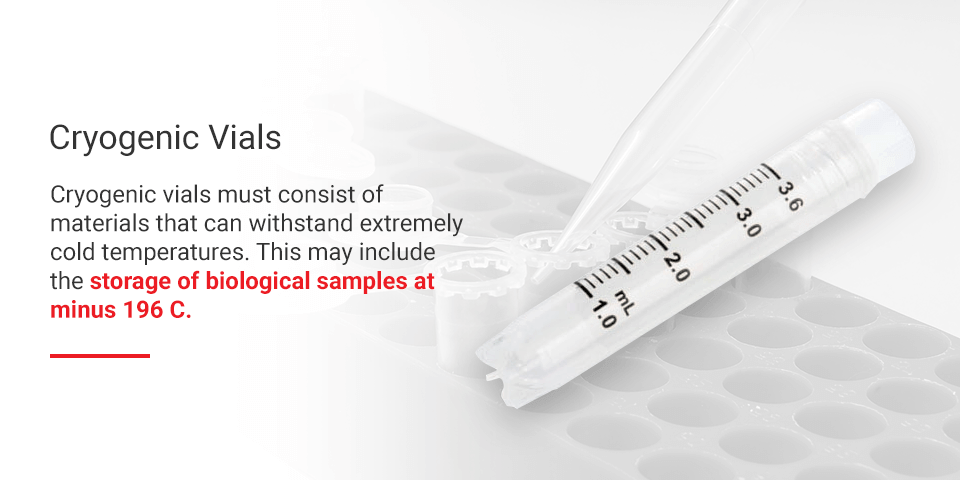
Cryogenic Vials
Cryogenic vials must be constructed from materials capable of withstanding extremely low temperatures, such as storing biological samples at -196°C. Selecting the right vial material safeguards samples, lab equipment, and personnel.
 hbspt.cta._relativeUrls=true;hbspt.cta.load(22042380, 'e7ceac0e-6e44-4fd8-80c1-399d694a0ad5', {"useNewLoader":"true","region":"na1"});
hbspt.cta._relativeUrls=true;hbspt.cta.load(22042380, 'e7ceac0e-6e44-4fd8-80c1-399d694a0ad5', {"useNewLoader":"true","region":"na1"});
Cryogenic vials are usually made of specially configured polypropylene. Glass cannot be used for cryogenic storage. Silicone O-rings should accompany the caps to prevent contamination and ensure a secure seal.
Sample Vials
Sample vials are general-purpose containers used for collecting, storing, or transporting various specimens. They may hold anything from essential oils to crime-scene evidence. Sample vials can be made of glass or plastic and are available in clear, amber, or white colors. Some sample vials are autoclavable.
 hbspt.cta._relativeUrls=true;hbspt.cta.load(22042380, '7a0d7bc4-11be-430e-ac00-b3e0ea67e978', {"useNewLoader":"true","region":"na1"});
hbspt.cta._relativeUrls=true;hbspt.cta.load(22042380, '7a0d7bc4-11be-430e-ac00-b3e0ea67e978', {"useNewLoader":"true","region":"na1"});
Selecting the right sample vial requires considering its purpose and the substances it will contain. Options abound in terms of material, size, and volume capacity. Polypropylene vials are a practical choice for shatterproof containers, while borosilicate glass vials may be preferable for high-temperature applications.
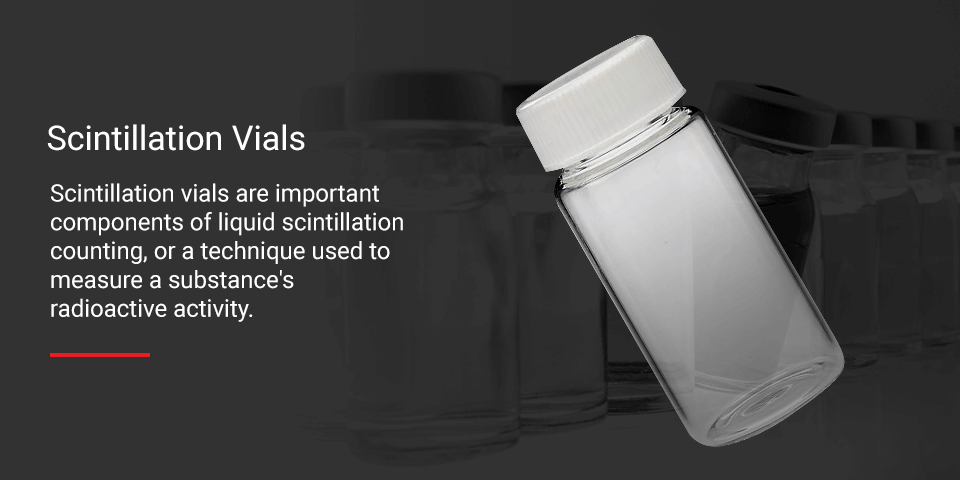
Scintillation Vials
Scintillation vials are integral to liquid scintillation counting, a technique used to measure the radioactive activity of a substance. During this process, radioactive samples are placed in glass or plastic vials and loaded into a liquid scintillation counter.
 hbspt.cta._relativeUrls=true;hbspt.cta.load(22042380, 'c52beef9-d3d2-43b5-be2c-b6f5c862ce42', {"useNewLoader":"true","region":"na1"});
hbspt.cta._relativeUrls=true;hbspt.cta.load(22042380, 'c52beef9-d3d2-43b5-be2c-b6f5c862ce42', {"useNewLoader":"true","region":"na1"}); Â
You might opt for transparent low-potassium borosilicate glass vials for easy inspection of the scintillation liquid, or "cocktail." Polyethylene vials serve as an economical alternative but are permeable to benzene, xylene, and toluene. Most liquid scintillation vials have a 20-milliliter capacity, though smaller sizes are also available.
Other Vials
If you require a specialized vial, chances are it already exists. Here are a few additional types and their functions:
- Filter Vial: A filter vial allows quick and easy removal of particulates from samples. Typically, filter vials feature a plunger with a filter on one end and a cap on the other. Pushing the plunger forces the sample liquid through the filter. Filter vials streamline processes, save time, and reduce tool requirements. They integrate seamlessly with standard autosamplers and trays.
- Transport Vial: Transport vials are designed specifically for collecting and moving general specimens. They may have flat bottoms for stability or conical bottoms for optimal sample recovery. While borosilicate glass transport vials suit certain samples, polypropylene is often chosen for its durability during transit.
- Open-Top Vial: Open-top vials feature an inert polypropylene screw cap with a central hole and a silicone or polytetrafluoroethylene (PTFE) septum beneath. The septum ensures an airtight seal. An autosampler needle can easily pierce the septum to access the sample. Larger cap openings reduce the risk of needle bending.
- Low-Evaporation Filter Vial: A low-evaporation filter vial incorporates a special cap to minimize evaporation rates. Similar to standard screw caps, it allows for sample filtration.

Vial Inserts
Vial inserts maximize sample retrieval and simplify content removal. They address scenarios with limited sample quantities and enhance autosampler performance by increasing the depth of the sample within the vial. Inserts are typically available in borosilicate glass or polypropylene, with various shapes. Type 1 borosilicate glass is favored in chromatography, while polypropylene offers affordability for pH-sensitive materials.
 hbspt.cta._relativeUrls=true;hbspt.cta.load(22042380, '164c6711-9abe-428a-b819-cd3e59ade494', {"useNewLoader":"true","region":"na1"});
hbspt.cta._relativeUrls=true;hbspt.cta.load(22042380, '164c6711-9abe-428a-b819-cd3e59ade494', {"useNewLoader":"true","region":"na1"}); Common insert styles include:
- Conical: Conical inserts taper at the bottom and may include shock-absorbing springs.
- Flat: Flat inserts are cylindrical with a flat bottom. They offer the greatest capacity and may be the most economical choice.
- Mandrel: Mandrel inserts feature precise tips to minimize residual volume. They are ideal for maximizing sample recovery.
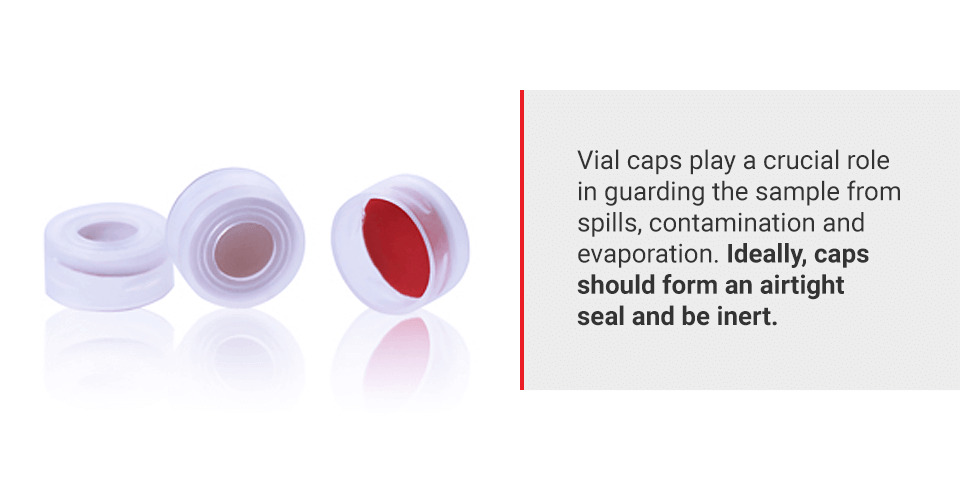
Vial Caps and Septa
Vial caps play a critical role in safeguarding samples from spills, contamination, and evaporation. Ideally, caps should form an airtight seal and remain inert. Many caps incorporate a silicone or polytetrafluoroethylene (PTFE) septum, creating a tight seal. Needles can pierce the septum due to the material's elasticity, which allows it to reclose.
Septa are commonly made of PTFE and silicone. Silicone septa offer several advantages. For instance, silicone withstands extreme temperatures while maintaining flexibility. It is chemically inert and won’t affect sample integrity. Furthermore, silicone resists UV radiation and is compatible with various sterilization methods, including steam autoclaving.
 hbspt.cta._relativeUrls=true;hbspt.cta.load(22042380, 'c92cfb88-e0af-4cb7-844c-ded7c9965836', {"useNewLoader":"true","region":"na1"});
hbspt.cta._relativeUrls=true;hbspt.cta.load(22042380, 'c92cfb88-e0af-4cb7-844c-ded7c9965836', {"useNewLoader":"true","region":"na1"}); You have numerous options when choosing septa. Common septum materials include:
- PTFE/Silicone: A PTFE/silicone septum combines pure silicone laminated with PTFE. This combination ensures high inertness and excellent resealing capabilities, even after multiple punctures. This is often the preferred choice for chromatography applications.
- PTFE: PTFE septa provide excellent solvent resistance and are easy to penetrate. However, they are not resealable and are best suited for short-term storage and single-injection use.
- Pre-Slit PTFE/Silicone: Pre-slit septa feature a central slit, facilitating easier penetration and sample removal. Like silicone septa without slits, they offer excellent resealing capabilities. However, pre-slit septa are slightly less tolerant of aggressive solvents. A pre-slit PTFE/silicone septum may enhance autosampler reproducibility.
- PTFE/Red Rubber: PTFE/red rubber septa are a popular and budget-friendly option for standard gas chromatography. They provide moderate resealing capabilities and high chemical inertness. Avoid using PTFE/red rubber septa for multiple injections.
When selecting a vial, choosing the right cap is equally important. Vial caps are generally available in three types:
- Screw: Most people are familiar with screw caps used for water or soda bottles. Vial screw caps function similarly, providing an excellent seal. Turning the cap applies pressure, securing the septum between the vial rim and the cap, preventing movement upon piercing. Screw caps may feature an opening for autosampler use or a solid top for storage purposes.
- Crimp: Crimp caps typically consist of an aluminum cap and a PTFE/silicone septum. This type of cap compresses the septum tightly between the vial and the cap, forming a superior seal and minimizing evaporation. Crimp caps require manual or automatic crimping tools.
- Snap: A snap cap provides a moderate seal and doesn’t require special tools. It can be easily snapped onto a vial and removed by hand. With an opening at the top, snap caps allow easy access for autosamplers. They are recommended for short-term storage and can be used with septa and metal O-rings.
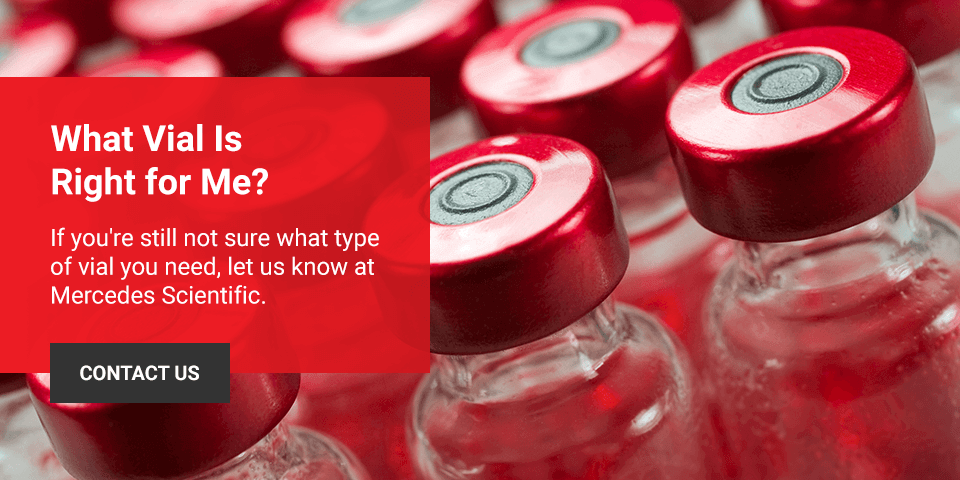
Frozen squid chunks are pieces of squid that have been cleaned, cut into bite-sized pieces, and then frozen. They are a popular seafood item that can be used in a variety of dishes, such as stir-fries, stews, and soups. Frozen squid chunks are convenient because they can be stored in the freezer for an extended period, making them readily available for cooking whenever needed. They are also a good source of protein, vitamins, and minerals, and can be a healthy addition to a balanced diet.
Frozen Squid Chunk,High Quality Seafood Frozen Squid Chunk,Frozen Seafood Squid Product,Frozen Squid Chunk Frozen Seafood
Zhoushan Fudan Tourism CO., LTD , https://www.fudanfood.com
